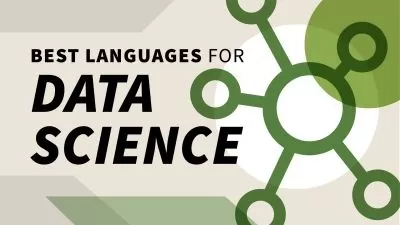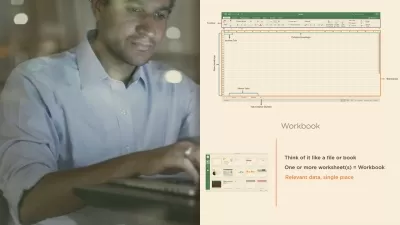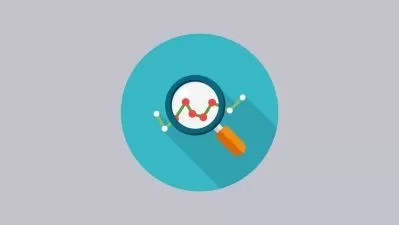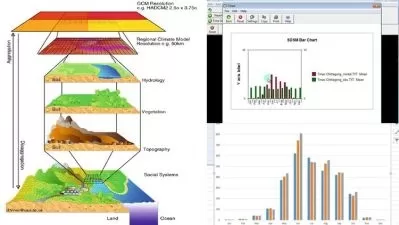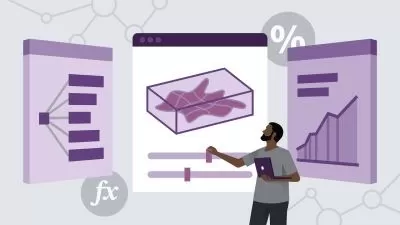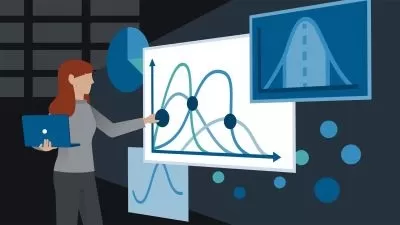Mathematical Statistics for Data Science
Brian Greco
4:12:33
Description
An introduction to mathematical statistics for data science, covering method of moments, maximum likelihood, and more
What You'll Learn?
- Learn how to use the method of moments and maximum likelihood estimation to learn from data
- Learn how to evaluate and compare different methods using notions such as bias, variance, and mean squared error.
- Master the Bernoulli, Uniform and Normal Distributions
- Learn about the Cramer-Rao lower bound and how to know if we have found the best possible estimator
- Learn to evaluate asymptotic properties of estimators, including consistency and the central limit theorem.
- Learn to create confidence intervals
Who is this for?
More details
DescriptionThis course teaches the foundations of mathematical statistics, focusing on methods of estimation such as the method of moments and maximum likelihood estimators (MLEs), evaluating estimators by their bias, variance, and efficiency, and an introduction to asymptotic statistics including the central limit theorem and confidence intervals.
The course includes:
Over four hours of video lectures, using the innovative lightboard technology to deliver face-to-face lectures
Supplementary lecture notes with each lesson covering important vocabulary, examples and explanations from the video lessons
End of chapter practice problems to reinforce your understanding and develop skills from the course
You will learn about:
Three common probability distributions, the Bernoulli distribution, uniform distribution, and normal distribution
Expected value and its relation to the sample mean
The method of moments for creating estimators
Expected value of estimators and unbiased estimators
Variance of random variables and variance of estimators
Fisher information and the Cramer-Rao Lower Bound
The central limit theorem
Confidence intervals
This course is ideal for many types of students:
Students who have taken an introductory statistics class and who would like to dive into the mathematical details
Data science professionals who would like to refresh or expand their statistics knowledge to prepare for job interviews
Anyone who wants to learn how to think like a statistician
Pre-requisites
The course requires a good understanding of high school algebra and manipulating equations with variables.
Some chapters use concepts from introductory calculus like differentiation or integration. Â If you do not know calculus but otherwise have strong math skills, you can still follow along while only missing a few mathematical details.
Who this course is for:
- Anyone who has taken a basic statistics class and wants to dive into more mathematical detail
- Data scientists looking to learn some basics of mathematical statistics
- Undergraduate and graduate students looking for help in mathematical statistics courses
- Academics and professionals wanting a strong foundation for further study in statistics
This course teaches the foundations of mathematical statistics, focusing on methods of estimation such as the method of moments and maximum likelihood estimators (MLEs), evaluating estimators by their bias, variance, and efficiency, and an introduction to asymptotic statistics including the central limit theorem and confidence intervals.
The course includes:
Over four hours of video lectures, using the innovative lightboard technology to deliver face-to-face lectures
Supplementary lecture notes with each lesson covering important vocabulary, examples and explanations from the video lessons
End of chapter practice problems to reinforce your understanding and develop skills from the course
You will learn about:
Three common probability distributions, the Bernoulli distribution, uniform distribution, and normal distribution
Expected value and its relation to the sample mean
The method of moments for creating estimators
Expected value of estimators and unbiased estimators
Variance of random variables and variance of estimators
Fisher information and the Cramer-Rao Lower Bound
The central limit theorem
Confidence intervals
This course is ideal for many types of students:
Students who have taken an introductory statistics class and who would like to dive into the mathematical details
Data science professionals who would like to refresh or expand their statistics knowledge to prepare for job interviews
Anyone who wants to learn how to think like a statistician
Pre-requisites
The course requires a good understanding of high school algebra and manipulating equations with variables.
Some chapters use concepts from introductory calculus like differentiation or integration. Â If you do not know calculus but otherwise have strong math skills, you can still follow along while only missing a few mathematical details.
Who this course is for:
- Anyone who has taken a basic statistics class and wants to dive into more mathematical detail
- Data scientists looking to learn some basics of mathematical statistics
- Undergraduate and graduate students looking for help in mathematical statistics courses
- Academics and professionals wanting a strong foundation for further study in statistics
User Reviews
Rating
Brian Greco
Instructor's Courses
Udemy
View courses Udemy- language english
- Training sessions 57
- duration 4:12:33
- Release Date 2023/04/11






